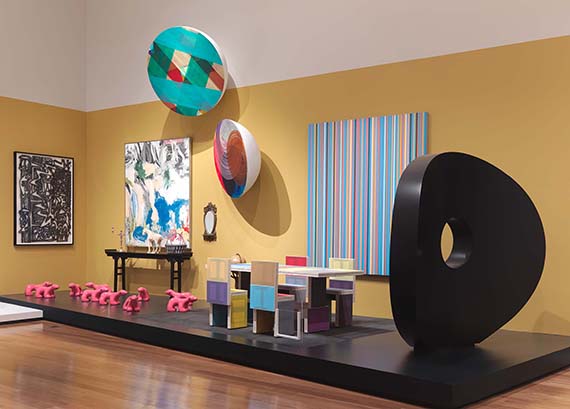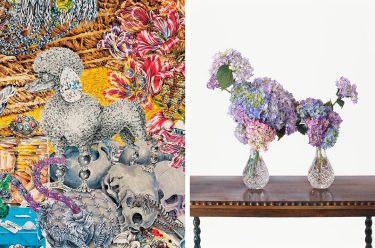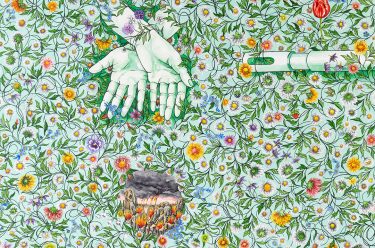In 2011, curator Robert Leonard, summed up Michael Zavros’s art practice in an erudite article for the journal ‘Art & Australia’.
It is often said that Zavros’s subject is beauty itself, but it is, more generally, symbols of status. His canon of beauty is aspirational – keyed to notions of privilege, tradition and the faux-aristocratic taste of luxury brands. Zavros’s work speaks to a desire for status, and therefore also to our fear of not having it – what television-philosopher Alain de Botton famously called ‘status anxiety’… Those who love him think his work epitomises precisely what art should be (which is what they have or want, like and are); those who loathe him think it is everything art should not be (class, ideology). The strength and clarity of Zavros’s project lies precisely in his ability to polarise his audience…
For me, what is so sharp about Zavros’s art is how utterly, rigorously and deliberately uncritical it is.
With this in mind, I have come to suspect that when Michael ‘likes’ something, he may well like it with a greater commitment than another person might in a similar situation. When, as Leonard notes, ‘Zavros is an aesthete: he paints beautiful things beautifully’, I think to myself, Michael likes certain objects so much — objects that he finds beautiful — that he cannot help but paint them in dedication or devoutness.
When I took Michael through the QAGOMA Collection storage looking for works to include in ‘A Private Collection’, I noticed how very easy it was for him to discern what he found appealing. Michael could say with speed and conviction as we walked at pace through the racks of artworks: ‘yes’, ‘hmm’ (meaning polite no), ‘yes, I love this’. Less concerned with historical context, social function, cultural significance, Michael is motivated by satisfying his very attentive eyes.

As Michael explained in our recent video interview, if he feels positively towards an artwork, piece of furniture or item of clothing, it inspires him to exercise a kind of intellectual ownership over it. In the studio, he becomes committed to forming a visual understanding of his affections, converting his meditations into a drawn or painted image, using his knowledge of form and tone. Often he creates scenes or interiors to contextualise his subjects and give them depth.
Applying this strategy to ‘A Private Collection’, Michael came to ‘own’ certain works from the Collection by creating a series of decorative settings, a visual balance through the display, and making the works accessible through the more familiar or comfortable vernacular of the domestic, rather than the standard museum method.
Walking through ‘A Private Collection’ we can see the world the way that Michael does – keyed to beauty, splendour, and playfulness — exploring his personality projected into the space. The exhibition itself becomes an artwork, a space that we imagine sharing time in, living in, and reflecting upon. Whether he is railing against a fear of not having things, I am not so sure but he certainly is aware of what quality means to him in terms of human achievement. I suspect his intention is to try to fix beauty in taxidermy, art, or even the exhibition catalogue of installation photographs, revealing not so much a status anxiety, but an awareness that everything, beautiful or not, is transient — whatever precautions we may take to stop it from fading away.
‘A Private Collection – Artist’s Choice: Michael Zavros‘ is on display until 23 June in the Xstra Coal Queensland Artists’ Gallery at the Queensland Art Gallery (QAG). Mirroring Michael Zavros’s recasting of the Gallery space as home to a distinguished private collector, the accompanying publication continues the fiction. With photography modelled on the style of a lavish interior decorating magazine, and captions imagining the collector’s life and adventures, this is a beautiful guide to the works on display.

